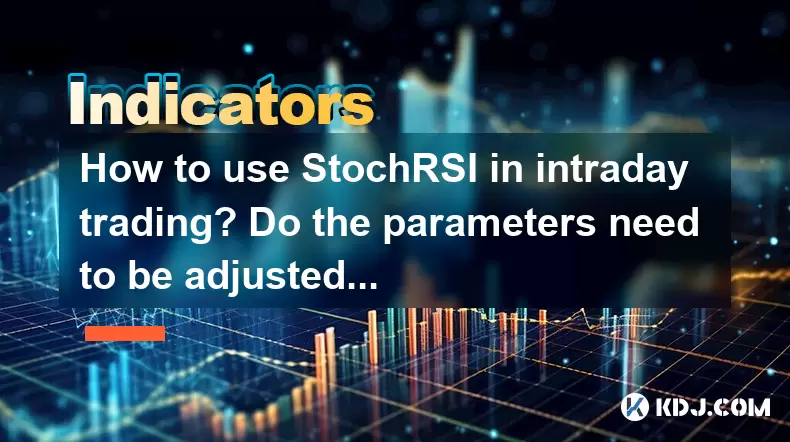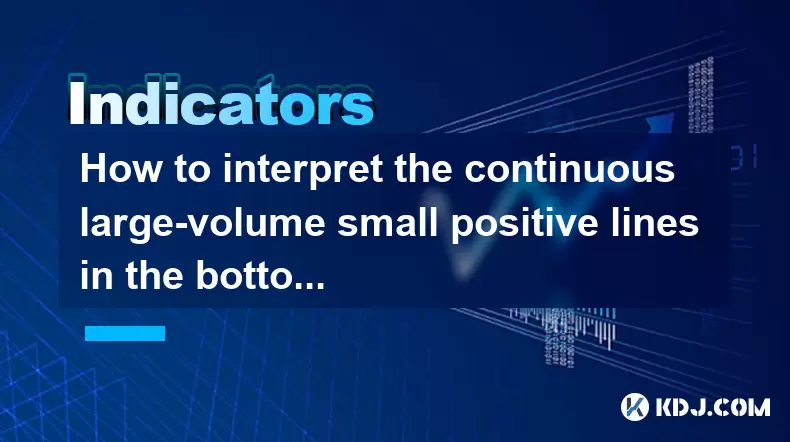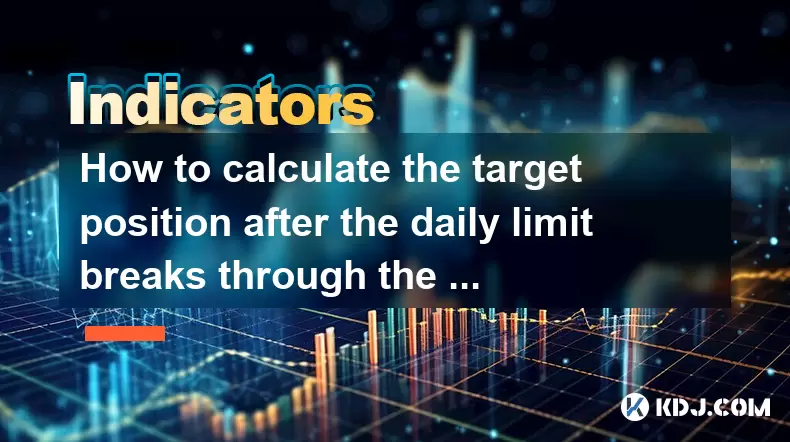-
 Bitcoin
Bitcoin $101,898.5005
-0.75% -
 Ethereum
Ethereum $2,258.1125
-1.07% -
 Tether USDt
Tether USDt $1.0004
0.01% -
 XRP
XRP $2.0178
-2.93% -
 BNB
BNB $624.0243
-1.53% -
 Solana
Solana $134.3298
-0.90% -
 USDC
USDC $0.9999
0.01% -
 TRON
TRON $0.2675
-2.05% -
 Dogecoin
Dogecoin $0.1538
-1.96% -
 Cardano
Cardano $0.5482
-1.11% -
 Hyperliquid
Hyperliquid $35.5636
5.45% -
 Bitcoin Cash
Bitcoin Cash $453.4902
-1.66% -
 Sui
Sui $2.5134
-2.97% -
 UNUS SED LEO
UNUS SED LEO $9.1292
1.77% -
 Chainlink
Chainlink $11.8457
-1.60% -
 Stellar
Stellar $0.2312
-2.73% -
 Avalanche
Avalanche $16.9721
0.29% -
 Toncoin
Toncoin $2.7549
-3.82% -
 Shiba Inu
Shiba Inu $0.0...01081
-1.10% -
 Litecoin
Litecoin $80.8250
-0.71% -
 Hedera
Hedera $0.1374
0.21% -
 Monero
Monero $305.4827
-2.36% -
 Ethena USDe
Ethena USDe $1.0006
0.00% -
 Dai
Dai $1.0000
-0.01% -
 Polkadot
Polkadot $3.2085
-3.12% -
 Bitget Token
Bitget Token $4.0845
-3.13% -
 Uniswap
Uniswap $6.3353
-1.63% -
 Pi
Pi $0.5085
-0.70% -
 Pepe
Pepe $0.0...08913
-3.82% -
 Aave
Aave $232.7090
-0.58%
How to use StochRSI in intraday trading? Do the parameters need to be adjusted?
StochRSI, combining RSI and Stochastic Oscillator, is vital for intraday trading, helping identify overbought/oversold levels and potential reversals.
May 24, 2025 at 04:22 am

How to Use StochRSI in Intraday Trading? Do the Parameters Need to Be Adjusted?
The Stochastic Relative Strength Index (StochRSI) is a powerful technical indicator that combines the features of the RSI (Relative Strength Index) and the Stochastic Oscillator. It is particularly useful in intraday trading, where quick and precise decisions are crucial. This article will guide you through the process of using StochRSI in intraday trading and discuss whether its parameters need adjustment.
Understanding StochRSI
StochRSI is an oscillator that ranges from 0 to 1 and is derived from the RSI. It measures the RSI's position relative to its high-low range over a set period of time. The formula for StochRSI is:
[ \text{StochRSI} = \frac{\text{RSI} - \text{Lowest RSI}}{\text{Highest RSI} - \text{Lowest RSI}} ]
Where:
- RSI is the current RSI value.
- Lowest RSI is the lowest RSI value over the lookback period.
- Highest RSI is the highest RSI value over the lookback period.
Setting Up StochRSI for Intraday Trading
To use StochRSI effectively in intraday trading, you need to set it up correctly in your trading platform. Here’s how you can do it:
- Choose your trading platform: Most major trading platforms like TradingView, MetaTrader 4, or MetaTrader 5 support StochRSI.
- Add StochRSI to your chart: In TradingView, for instance, you can add StochRSI by clicking on the indicators menu, searching for StochRSI, and then selecting it.
- Set the parameters: The default parameters for StochRSI are typically an RSI length of 14 and a StochRSI length of 14. These can be adjusted based on your trading strategy.
Interpreting StochRSI Readings
StochRSI readings can be interpreted in several ways to guide your intraday trading decisions:
- Overbought and Oversold Levels: A StochRSI value above 0.80 is generally considered overbought, while a value below 0.20 is considered oversold. These levels can signal potential reversals in the market.
- Crossovers: When the StochRSI line crosses above 0.20 from below, it may indicate a buying opportunity. Conversely, a cross below 0.80 from above may signal a selling opportunity.
- Divergence: If the price of the asset makes a new high or low but the StochRSI does not, it can indicate a potential reversal.
Using StochRSI in Intraday Trading Strategies
Intraday trading strategies using StochRSI can be highly effective when combined with other technical indicators. Here are some strategies:
- Scalping: Use StochRSI to identify quick entry and exit points. For example, when StochRSI moves from below 0.20 to above it, you might enter a long position. When it moves from above 0.80 to below it, you might exit or enter a short position.
- Breakout Trading: Combine StochRSI with other indicators like Bollinger Bands to identify potential breakouts. If StochRSI is near 0.20 and the price breaks above a resistance level, it could be a strong buy signal.
- Trend Following: Use StochRSI to confirm trends. If the price is in an uptrend and StochRSI stays above 0.20, it can confirm the strength of the trend.
Adjusting StochRSI Parameters
Adjusting the parameters of StochRSI can help tailor the indicator to your specific trading style and the asset you are trading. Here are some considerations:
- RSI Length: The default RSI length is 14 periods. Shortening this to 9 or 10 periods can make the indicator more sensitive to price changes, which is useful for intraday trading. However, it may also increase false signals.
- StochRSI Length: The default StochRSI length is also 14 periods. Reducing this to 3 or 5 periods can provide quicker signals but may increase noise.
- Overbought and Oversold Levels: You can adjust these levels to suit the volatility of the asset you are trading. For highly volatile assets, you might use 0.70 and 0.30 instead of 0.80 and 0.20.
Practical Example of Using StochRSI in Intraday Trading
Let's walk through a practical example of using StochRSI in intraday trading:
- Step 1: Open your trading platform and add StochRSI to your chart. Set the RSI length to 10 and the StochRSI length to 5 for more responsive signals.
- Step 2: Monitor the StochRSI readings. If the StochRSI falls below 0.20, watch for it to cross back above this level.
- Step 3: When the StochRSI crosses above 0.20, consider entering a long position. Set a stop-loss just below the recent low.
- Step 4: Monitor the StochRSI for a move above 0.80. When it crosses back below 0.80, consider exiting your long position or entering a short position.
- Step 5: Use other indicators like moving averages or volume to confirm your StochRSI signals and manage your trades accordingly.
Frequently Asked Questions
Q1: Can StochRSI be used alone for trading decisions?
A1: While StochRSI can provide valuable insights, it is generally recommended to use it in conjunction with other technical indicators and analysis methods to increase the reliability of your trading signals.
Q2: How does StochRSI perform in different market conditions?
A2: StochRSI can be effective in both trending and ranging markets. In trending markets, it helps confirm the strength of the trend, while in ranging markets, it can identify overbought and oversold conditions more accurately.
Q3: Is StochRSI suitable for all types of assets?
A3: StochRSI can be applied to various assets, including stocks, forex, and cryptocurrencies. However, its effectiveness may vary depending on the asset's volatility and trading volume.
Q4: What are the risks of using StochRSI in intraday trading?
A4: The main risks include false signals due to the indicator's sensitivity and potential whipsaws in volatile markets. It's important to use StochRSI with other indicators and to have a solid risk management strategy in place.
Disclaimer:info@kdj.com
The information provided is not trading advice. kdj.com does not assume any responsibility for any investments made based on the information provided in this article. Cryptocurrencies are highly volatile and it is highly recommended that you invest with caution after thorough research!
If you believe that the content used on this website infringes your copyright, please contact us immediately (info@kdj.com) and we will delete it promptly.
- Bitcoin Price Wobbles: Crash Watch and Key Support Levels
- 2025-06-23 16:25:12
- Navigating the Crypto Seas: Charting a Course Through Bull Runs and Bear Markets
- 2025-06-23 16:25:12
- BNB Price Check: Stablecoin Surge vs. Prediction Rollercoaster
- 2025-06-23 14:25:12
- Metaplanet's Bitcoin Bonanza: Holdings Skyrocket Amidst Market Swings
- 2025-06-23 14:25:12
- Global Meltdown, Investors, and Safe Havens: Navigating the Storm
- 2025-06-23 14:30:12
- NFT Sales Snapshot: Guild of Heroes, Polygon, and the Market's Shifting Sands
- 2025-06-23 15:25:12
Related knowledge

Is the high opening and low closing and huge volume the next day a trap for more?
Jun 23,2025 at 05:07pm
Understanding High Opening and Low Closing with Huge VolumeWhen traders observe a high opening followed by a low closing and massive volume the next day, it often raises concerns about whether this is a trap set by larger players in the market. This pattern typically indicates strong volatility within a short period, which can confuse retail investors. ...

How to interpret the MACD's second golden cross on the water but insufficient volume?
Jun 23,2025 at 05:01pm
Understanding the MACD Indicator and Its SignificanceThe Moving Average Convergence Divergence (MACD) is a widely used technical analysis tool in cryptocurrency trading. It helps traders identify potential buy or sell signals by showing the relationship between two moving averages of an asset’s price. The MACD line, signal line, and histogram are the th...

How much volume is required for the W-bottom to break through the neckline of the time-sharing chart?
Jun 23,2025 at 04:21pm
Understanding the W-Bottom Pattern in Cryptocurrency TradingThe W-bottom pattern is a popular technical analysis formation used by traders to identify potential bullish reversals. It typically appears at the end of a downtrend and resembles the letter 'W' on price charts. In the context of cryptocurrency trading, where volatility is high and trends shif...

How to interpret the continuous large-volume small positive lines in the bottom area?
Jun 23,2025 at 04:43pm
Understanding the Basics of 'Large-Volume Small Positive Lines'In technical analysis, especially within the cryptocurrency market, the pattern known as 'large-volume small positive lines' refers to a scenario where the price increases slightly (small positive candlestick) but is accompanied by unusually high trading volume. This phenomenon typically occ...

How to read the sideways consolidation after the bottom volume and long positive line?
Jun 23,2025 at 02:28pm
Understanding the Sideways ConsolidationWhen analyzing cryptocurrency charts, sidewards consolidation refers to a phase where prices move within a narrow range without a clear upward or downward trend. This pattern often appears after significant price movements, such as a sharp increase followed by a period of equilibrium between buyers and sellers. In...

How to calculate the target position after the daily limit breaks through the previous high?
Jun 23,2025 at 02:57pm
Understanding the Daily Limit BreakthroughIn cryptocurrency trading, a daily limit typically refers to the maximum price movement allowed within a single trading day on certain exchanges. When this limit is breached, especially when it surpasses the previous high, traders often seek to calculate the target position or expected price movement following s...

Is the high opening and low closing and huge volume the next day a trap for more?
Jun 23,2025 at 05:07pm
Understanding High Opening and Low Closing with Huge VolumeWhen traders observe a high opening followed by a low closing and massive volume the next day, it often raises concerns about whether this is a trap set by larger players in the market. This pattern typically indicates strong volatility within a short period, which can confuse retail investors. ...

How to interpret the MACD's second golden cross on the water but insufficient volume?
Jun 23,2025 at 05:01pm
Understanding the MACD Indicator and Its SignificanceThe Moving Average Convergence Divergence (MACD) is a widely used technical analysis tool in cryptocurrency trading. It helps traders identify potential buy or sell signals by showing the relationship between two moving averages of an asset’s price. The MACD line, signal line, and histogram are the th...

How much volume is required for the W-bottom to break through the neckline of the time-sharing chart?
Jun 23,2025 at 04:21pm
Understanding the W-Bottom Pattern in Cryptocurrency TradingThe W-bottom pattern is a popular technical analysis formation used by traders to identify potential bullish reversals. It typically appears at the end of a downtrend and resembles the letter 'W' on price charts. In the context of cryptocurrency trading, where volatility is high and trends shif...

How to interpret the continuous large-volume small positive lines in the bottom area?
Jun 23,2025 at 04:43pm
Understanding the Basics of 'Large-Volume Small Positive Lines'In technical analysis, especially within the cryptocurrency market, the pattern known as 'large-volume small positive lines' refers to a scenario where the price increases slightly (small positive candlestick) but is accompanied by unusually high trading volume. This phenomenon typically occ...

How to read the sideways consolidation after the bottom volume and long positive line?
Jun 23,2025 at 02:28pm
Understanding the Sideways ConsolidationWhen analyzing cryptocurrency charts, sidewards consolidation refers to a phase where prices move within a narrow range without a clear upward or downward trend. This pattern often appears after significant price movements, such as a sharp increase followed by a period of equilibrium between buyers and sellers. In...

How to calculate the target position after the daily limit breaks through the previous high?
Jun 23,2025 at 02:57pm
Understanding the Daily Limit BreakthroughIn cryptocurrency trading, a daily limit typically refers to the maximum price movement allowed within a single trading day on certain exchanges. When this limit is breached, especially when it surpasses the previous high, traders often seek to calculate the target position or expected price movement following s...
See all articles
























































































